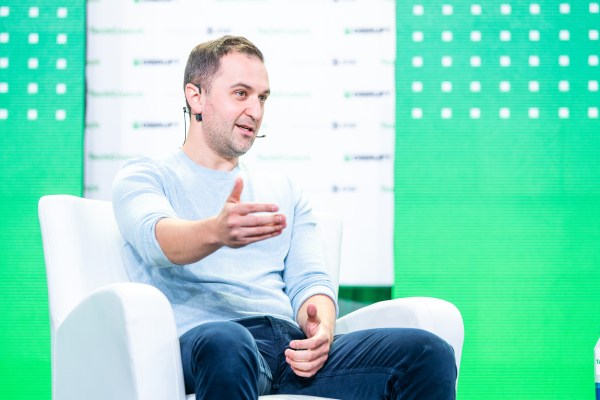Human drivers on the Lyft platform aren’t going to be replaced by autonomous vehicles anytime soon, company co-founder and president John Zimmer told the audience today at TechCrunch Disrupt.
“I can’t imagine anytime in the next decade-plus where we would need any less drivers,” he said, noting that he envisions autonomous vehicles handling anywhere from 1% to 10% of rides in the future.
“What we do in our industry represents maybe 1% of vehicle miles traveled,” he said. “There’s much more room for growth of our overall business.”
Over the past decade, more than 112 million Lyft riders have taken over 3 billion rides, and 5 million drivers — “3% of the U.S. workforce,” Zimmer said — had earned tens of billions of dollars.
In his talk with transportation editor Kirsten Korosec, Zimmer was hesitant to commit to a timeline on which he thinks autonomous vehicles will enter into broader commercial service.
“I always think it’s just a couple years away, but it’s super hard to predict,” he said. “It’s this last percent of a technical problem, and then you have to get the cost down for autonomous vehicles. So it will happen. I strongly believe it’s not a matter of if, but obviously when.”
Should it happen, Zimmer thinks that the initial rollout is likely to occur on platforms like Lyft. The best way to commercialize autonomous vehicles, he said, is on a “hybrid network.” Though autonomous vehicles have progressed in their capabilities, they’re still unable to handle every condition they’ll encounter on the roads. Even if they are able to safely navigate 10% of trips, that’s not a sufficient number to bring riders on board en masse.
“Imagine being on AT&T or Verizon and making one out of 10 calls. That would not be a good network to be on,” said Zimmer. “Being on the Lyft network, you’ll be able to get 10 out of 10 rides. One might be an autonomous vehicle with one of our partners, nine are going to be from our driver community. And so I think what we do is super important and can flex as that technology is ready.”
Lyft’s autonomous vehicle strategy has changed significantly in the last year or so. In April 2021, the company sold its self-driving unit to Toyota’s Woven Planet subsidiary for $550 million, saving the company $100 million annually in operating expenses. In place of that, Zimmer said the company has been prioritizing partnerships over internal development.
In August, Lyft and autonomous vehicle technology company Motional launched robotaxis in Las Vegas on the Lyft network.
“I think it’s too early to pick one winner,” he said. “Today, it’s about having multiple partners. Ten years from now? Too hard to predict.”
While Lyft works to add autonomous vehicles to its network, many of the company’s drivers today are potentially augmented by Level 2 advanced driver assistance systems, known as ADAS, including Tesla’s Autopilot and possibly its Full Self Driving (FSD) software. These systems automate certain driving functions, but drivers still need to keep their hands on the wheel and eyes on the road while they’re engaged.
Tesla has come under fire from regulatory bodies due to issues with its ADAS, which has been linked to several accidents. Drivers have also sued Tesla, claiming it falsely advertises the autonomous capabilities of its software.
When Korosec asked Zimmer asked whether Lyft had considered prohibiting the use of Level 2 ADAS like Autopilot or FSD, he said that Lyft “think[s] that the regulatory bodies are our best regulators when it comes to that level of safety.”
Of course, in its terms of service, Lyft already regulates its drivers in some respects, including saying that drivers cannot “engage in reckless behavior while driving” or “operate a vehicle that is unsafe to drive.”
When pressed, Zimmer said that Lyft would “continue to assess” its policy regarding driver use of Level 2 autonomous assistants. “Obviously, driver and rider safety is our top priority. And so to your point, it’s something that will continue to be looked at.”
